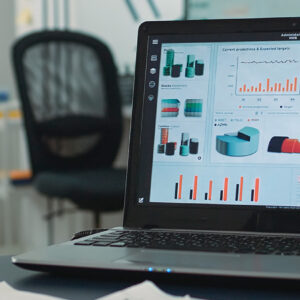Data is the new gold
The monthly smartphone data traffic per smartphone in the Middle East and North Africa is projected to amount to 26.34 exabytes (EB) per active device by 2028.
Today, data is reshaping the business landscape. It’s not just numbers and bytes; for companies, especially in the Software as a Service (SaaS) sector, it’s a cornerstone. This data drives growth, sparks innovation, and builds trust with customers. Recognizing its worth and ensuring its safety is more than essential—it’s critical.
The Middle East, with its rapid digital transformation, presents both opportunities and challenges for SaaS companies. While data can propel businesses to new heights, mishandling it can lead to significant setbacks, especially given the region’s stringent data protection laws.
For SaaS businesses in the Middle East, data privacy isn’t just about compliance; it’s about building trust in the region.
In this blog we will delve deeper into the data privacy regulations in the Middle East and best practices SaaS Businesses can follow to protect data privacy in the Middle East.
Let’s get started!
Overview of data privacy regulations in the Middle East
The Middle East is a rapidly growing market for SaaS, with a number of countries implementing data privacy regulations in recent years. These regulations are designed to protect the privacy of individuals in the Middle East, and they can have a significant impact on SaaS companies that operate in the region.
Here is an overview of some of the key data privacy regulations in the Middle East that SaaS companies should be aware of:
- United Arab Emirates (UAE) Data Protection Law (DPL)
The UAE DPL came into effect in November 2021 and is based on the European Union’s General Data Protection Regulation (GDPR). The DPL applies to all organizations that process personal data of individuals in the UAE, regardless of where the organization is located. The DPL sets out a number of requirements for organizations, including:
- Obtaining consent for data processing
- Implementing appropriate security measures
- Appointing a data protection officer (DPO)
- Conducting data privacy impact assessments (DPIAs)
- Responding to data subject requests
Transferring personal data only to countries with adequate data protection standards
- Saudi Arabia Personal Data Protection Law (PDPL)
The Saudi Arabia PDPL came into effect in September 2023 and is also based on the GDPR. The PDPL applies to all organizations that process personal data of individuals in Saudi Arabia, regardless of where the organization is located. The PDPL sets out similar requirements to the UAE DPL, but it also includes some additional provisions, such as a requirement to obtain explicit consent for the processing of sensitive personal data.
- Oman Personal Data Protection Law (PDPL)
The Oman PDPL came into effect in February 2023 and is based on the GDPR. However, it is not as comprehensive as the UAE DPL or the Saudi Arabia PDPL. The Oman PDPL does not include a requirement to appoint a DPO, and it does not have as many specific provisions on security measures and cross-border transfers.
These are just a few of the data privacy regulations in the Middle East. It is important to note that the regulatory landscape is constantly evolving, so it is important to stay up-to-date on the latest changes.
In addition to the specific regulations mentioned above, there are a few general principles that SaaS companies should keep in mind when operating in the Middle East:
- Transparency:
SaaS companies should be transparent about their data collection and processing practices. This means providing clear and concise information to users about how their data is being collected, used, and shared.
- Consent:
SaaS companies should obtain consent from users before collecting or processing their personal data. This consent should be freely given, specific, informed, and unambiguous.
- Security:
SaaS companies should take appropriate measures to protect the security of personal data. This includes measures to prevent unauthorized access, use, disclosure, alteration, or destruction of personal data.
- Accountability:
SaaS companies should be accountable for their data protection practices. This means having a process in place to handle data breaches and other incidents, and being able to demonstrate compliance with the law.
By following these principles, SaaS companies can help to ensure that they are compliant with data privacy regulations in the Middle East and protect the privacy of their users.
What are the top Data Security Challenges of SaaS Applications?
In the dynamic world of SaaS, every provider is distinct, each with its own set of challenges. But one common thread binds them all: the need for top-notch data security. Addressing these security concerns isn’t just a task for tech teams. It’s a collective effort, involving everyone from developers and SecDevOps to sales and marketing.
While innovation and new features have historically been the focus, the rising tide of security threats is pushing companies to prioritize safety. And it’s not just about protecting data. It’s also about meeting the standards set by regulations like GDPR, CCPA, and SOC 2 Type II.
Here’s a breakdown of some data security issues:
- Missteps In Configuration
Even a small oversight in setting up software can open doors for cyberattacks. Whether it’s a genuine mistake or a loophole exploited by hackers, the result can be damaging.
- Gaps In Monitoring
Keeping an eye on data flows is crucial. But with SaaS solutions increasingly moving to the cloud, real-time monitoring becomes a challenge, especially when handling sensitive personal data.
- Cloud Visibility Issues
For a SaaS company, not knowing the ins and outs of its cloud service can be a recipe for disaster. It’s like flying blind in a digital storm.
- Account Takeovers
One of the more common threats is when hackers gain control of a cloud account, often leading to ransom demands. It’s a high-stakes game where companies can lose valuable data and face reputational damage.
- Weak Cloud Security Foundations
Building a SaaS solution without a solid security foundation is like constructing a skyscraper on shaky ground. It’s essential to have a robust security blueprint right from the start.
10 Best Practices for SaaS Businesses to Protect Data Privacy in the Middle East
- Discover and map your SaaS data
Ensuring robust SaaS security begins with the comprehensive identification, classification, and continuous monitoring of all data, irrespective of its status. It’s essential for SaaS professionals to maintain visibility over their entire data landscape, including potential shadow or unmanaged data. Utilizing solutions like Polar Security can facilitate this, offering automated detection and systematic labeling of sensitive data assets.
- Data Encryption
In the cloud environment, where traditional protective measures like firewalls are inapplicable, the emphasis must be on advanced data encryption techniques and strategic key management. Many enterprises opt for localized key management, underscoring the importance of securing data “in transit”. Implementing protocols such as Transport Layer Security (TLS) becomes crucial, especially for data transmitted via channels like HTTP or FTP.
- Effective Identity and Access Management Controls
Robust Identity and Access Management (IAM) systems are non-negotiable. They validate user identities, ensuring seamless integration across tools. Enterprises demand consistency, avoiding the need for multiple passwords across platforms. Advanced IAM systems provide granular access control, meticulously logging user interactions.
- Logging and Monitoring
Comprehensive logging of all access attempts, both successful and unsuccessful, is imperative. Monitoring these logs and any data modifications is crucial for both immediate threat mitigation and long-term security strategy formulation.
- Matching Controls to your Risk Level
Security protocols should be calibrated based on the risk profile of the SaaS provider. While data security is paramount, it’s essential to strike a balance with system performance. Recent high-profile security breaches have necessitated a more equilibrium-focused approach, ensuring both operational efficiency and data integrity.
- Use a Security-first Software Development Life Cycle
Integrating security considerations into the Software Development Life Cycle (SDLC) is paramount. Augmenting the SDLC with threat modeling and penetration testing further elevates its security posture.
- SaaS Security Posture Management (SSPM)
SSPM aims to preemptively address vulnerabilities within the SDLC. It offers a consolidated view across cloud infrastructures, eliminating the need to monitor multiple endpoints individually. By streamlining configurations and expediting delivery timelines, SSPM plays a pivotal role in automating and enhancing SaaS data security.
- Use a Key Vault Service
Services like Norton’s Password Manager offer secure storage for user-generated authentication credentials. These platforms not only safeguard credentials but also provide functionalities like automatic generation of random usernames and passwords.
- Conduct Regular Security Audits
Periodic security audits are essential to maintain a robust defense against evolving cyber threats. By routinely assessing the system, vulnerabilities are identified and addressed, ensuring the infrastructure’s resilience and safeguarding critical data.
- Work with a Reputable Data Privacy Compliance Consultant
Navigating data privacy regulations requires expertise. Engaging with a seasoned compliance consultant ensures adherence to current standards and prepares for future legislative shifts, reinforcing the organization’s commitment to data protection.
Navigating Data Regulations In The Middle East With Zoftware
In the intricate web of data regulations within the Middle East, SaaS enterprises face a dual challenge: ensuring robust data security while seamlessly integrating into the region’s unique digital ecosystem.
Enter Zoftware, the MENA region’s pioneering software discovery platform. With its dual focus on push and pull marketing strategies, Zoftware not only facilitates a streamlined entry for SaaS entities into the Middle East but also ensures they connect with the right system integrators and resellers. These connections, backed by long standing relationships with the local MSME sector, provide an unparalleled advantage.
By connecting software companies with established System Integrators and Software resellers, Zoftware ensures a smooth entry and operation for these companies in the Middle East. Their emphasis on understanding buyer intent and providing support infrastructure further solidifies their role as trusted partners. In a region where data security and trust are paramount, Zoftware serves as a crucial ally for SaaS companies aiming to expand their footprint while adhering to local regulations.





